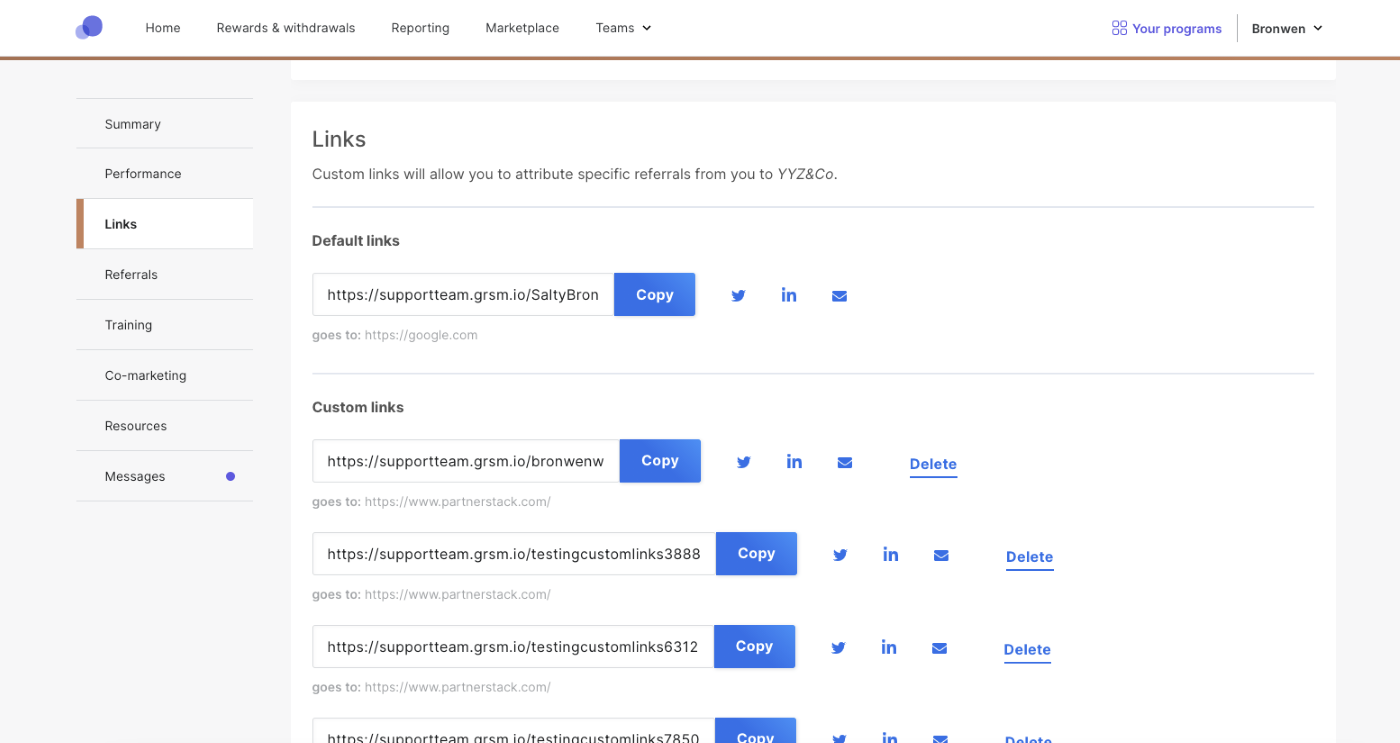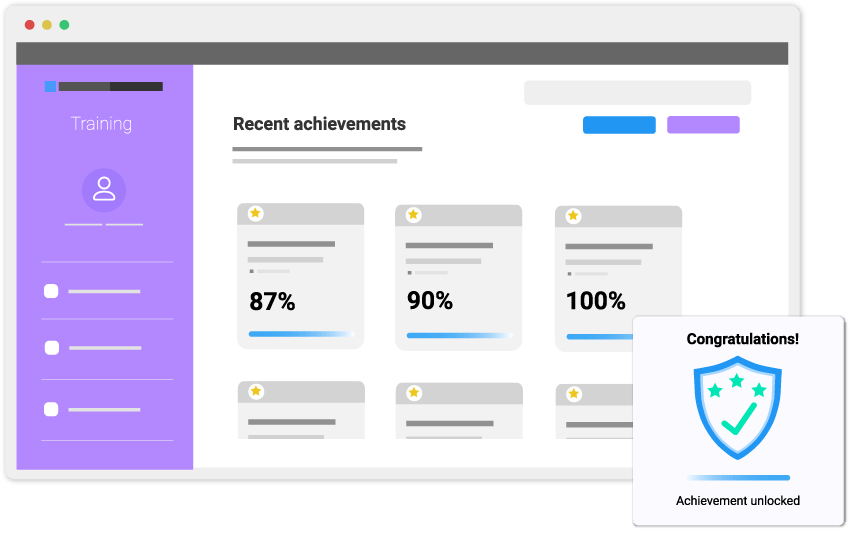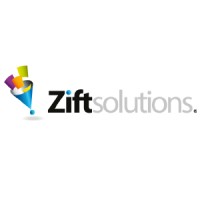While many service providers and retailers elect to sell to end users directly, some prefer to go through resellers. Additionally, some organizations contract with marketing agencies to handle their PR and advertising. If either of these scenarios fits your business, you need a way to easily track and manage your partners all at once. Partner relationship management software allows you to find and manage your channel partners all from one convenient console.
Jump to:
What is partner relationship management software?
Partner relationship management (PRM), also called partner management, is a type of software that helps organizations create and smoothly manage their business relationships with marketing agencies, resellers, and members of their supply chain. PRM software keeps track of inventory, pricing, and discounts while also helping organizations and their partners manage leads and opportunities.
Compare top partner management software
|
Partner Incentive Programs |
Real-time Chat |
Goal Management |
Document Management |
| Yes |
No |
No |
No |
| No |
Yes |
No |
Yes |
| Yes |
No |
Yes |
Yes |
| No |
No |
Yes |
Yes |
| Yes |
No |
No |
Yes |
PartnerStack

PartnerStack is a partner management solution that offers channel features for resellers, affiliates, and referral partners. Customer loyalty program embeds give you the ability to increase engagement from your customers and drive sales. Plus, partner incentives gamify your partner programs, motivating your partners to sell more of your inventory. The platform even automates partner payouts, so your partners always get paid on time. That simplicity will keep them working with you for the long run.
Magentrix
 Magentrix
Magentrix is a PRM system that makes partner communication easy with real-time chat options and document management. You can onboard your partners faster, ensure they have the support they need, and customize each of your partner’s portals. It offers a variety of integrations, including
Salesforce,
MailChimp, and Stripe. And the partner rewards program, with both points and cash offerings, helps boost your partners’ productivity.
Allbound

Allbound PRM offers unlimited users and partners, which is great for teams of any size and those that are still growing. The partner training center provides your partners with everything they need to know about your business to accurately sell your products and services. And with unlimited content storage, you don’t have to worry about running out of room for all of your assets. Additionally, you can compare partner programs to make sure you’re using your marketing budget efficiently.
Impartner

Impartner PRM is a cloud-enabled system that is easy to deploy and customize to your needs. It easily integrates with Salesforce and other CRM tools, allowing you to pull relevant partner information and automate onboarding processes. You can also compare partner performance and ensure that you’re directing the best leads to your strongest partners to maximize revenue. Right out of the box, Impartner includes a content management system and AI-enabled partner segmentation to help you easily distribute the right documents to the right partners.
Zift Solutions

Zift Solutions offers partner management software that allows you to customize your portal experiences for your partners and give them highly targeted content. You can also use the system to create training programs and playbooks to help your partners effectively sell your products and services. The out-of-the-box reporting and dashboard tools allow you to track ROI from each of your partners to make sure they’re all performing at the level you expect.
Key features of PRM tools
When choosing a partner management tool, look for software that includes at least the following features.
Inventory and rate control
Organizations need to ensure that their partners are advertising the right prices for each product or service and that they know exactly how many are available. Inventory and rate control helps businesses set appropriate rates and designate how much inventory they have. Then, the system pushes that information out to all of the partner listings and updates automatically when units are sold. It will also incorporate discounts when applicable.
For example, let’s say a computer manufacturer has 100 units of a certain model in stock. One of their partners has negotiated a 10% discount off the list price. So, while the PRM tool, like Impartner, may push a list price of $800 for most of the business’s partners, for that specific one, it incorporates the discount to show a price of $720. Then, when one of the partners sells a computer, it automatically deducts that unit from the initial 100 to prevent overselling.
Automated onboarding
Onboarding partners and getting them set up in the system can be a pain for vendors, but partner management software can make it easier. Many tools offer automated onboarding that gives partners a self-service portal where they can input relevant information. Then, the system automatically generates a contract and sends it to them to sign.
Some partner relationship management tools also integrate with your
CRM software, allowing you to pull information on partners directly from your CRM into your PRM.
Mobile access
Managing business partners doesn’t only happen while people are at their desks. Sales reps may need to initiate onboarding while they’re on the road or the support team may need to answer a question from partners after work hours. In these cases, mobile access is essential, and a partner relationship management system should include an easy-to-use mobile application.
Benefits of partner relationship management software
Partner relationship management software makes it easier for vendors to manage their partner agencies with better communication, standardized branding, and a single management console.
Partner consolidation
Businesses that have partners usually have more than one. Tracking them all can be difficult, but partner management software consolidates them into one console. Partner dashboards make it easy to compare your resellers, identify where most of your leads are coming from, and review invoice statuses.
Improved communication
Through the self-service portal, a partner management system should allow partners to submit questions or feedback that vendors can address quickly. This two-way collaboration increases partner engagement because they want vendors that are easy to work with. The PRM tool can also store partnership-related documents, making them available for all appropriate parties.
Standardized branding and marketing
Vendors need to keep their branding consistent across all of their partner sites, so their customers can recognize their products on sight. With partner relationship management software, organizations can automatically push out new logos, marketing materials, and ad copy to their partners to keep everything consistent across all of their channels.
The partner portal also provides a place for vendors to store co-branded assets that they’ve created specifically for that partner. For example, going back to our computer manufacturer, let’s say Best Buy and Target are two of their partners. Those two stores have vastly different branding, so the vendor would need to make two sets of ads — one that includes Best Buy’s branding, and one that includes Target’s.
Considerations for partner management tools

Not all partner management systems will work for every business, so here are some things to keep in mind when you’re choosing software.
Number of partners
When choosing a PRM solution, consider the number of partners you currently have and how much you’re planning to grow over the next few years. Some PRM tools offer unlimited partners, but others include a set number of partners. Whichever option you go with, you’ll need to ensure that you have room to grow or that you can at least upgrade to a higher package if you need more partner licenses.
Industry
Businesses in the service industry will have channels that look different than product-based businesses. Service providers need the ability to track their calendars from third-party sites while vendors will need accurate inventory management and storage for branded documents.
Service-based businesses may not require this same level of branding. Hotels, for example, often partner with listing websites like Expedia or Orbitz that mostly market themselves. At most, the hotels may need to provide a logo and pictures of their available rooms.
Budget
While partner management software is a great investment, you don’t want to break the bank to get started. Vendors offer a variety of different price points, and many of them offer tiered pricing models, allowing you to start small until you can make a larger investment. Focus on the most important features you need first, and then you can upgrade as necessary.
Finding the best partner management solution for your business
Partner management software should make it easier for you to add, track, and manage your business partners while automating some backend processes. Consider PRM tools that companies like yours also use. And make sure there’s room to grow if you need it.
 PartnerStack is a partner management solution that offers channel features for resellers, affiliates, and referral partners. Customer loyalty program embeds give you the ability to increase engagement from your customers and drive sales. Plus, partner incentives gamify your partner programs, motivating your partners to sell more of your inventory. The platform even automates partner payouts, so your partners always get paid on time. That simplicity will keep them working with you for the long run.
PartnerStack is a partner management solution that offers channel features for resellers, affiliates, and referral partners. Customer loyalty program embeds give you the ability to increase engagement from your customers and drive sales. Plus, partner incentives gamify your partner programs, motivating your partners to sell more of your inventory. The platform even automates partner payouts, so your partners always get paid on time. That simplicity will keep them working with you for the long run.
 Magentrix is a PRM system that makes partner communication easy with real-time chat options and document management. You can onboard your partners faster, ensure they have the support they need, and customize each of your partner’s portals. It offers a variety of integrations, including Salesforce, MailChimp, and Stripe. And the partner rewards program, with both points and cash offerings, helps boost your partners’ productivity.
Magentrix is a PRM system that makes partner communication easy with real-time chat options and document management. You can onboard your partners faster, ensure they have the support they need, and customize each of your partner’s portals. It offers a variety of integrations, including Salesforce, MailChimp, and Stripe. And the partner rewards program, with both points and cash offerings, helps boost your partners’ productivity.
 Allbound PRM offers unlimited users and partners, which is great for teams of any size and those that are still growing. The partner training center provides your partners with everything they need to know about your business to accurately sell your products and services. And with unlimited content storage, you don’t have to worry about running out of room for all of your assets. Additionally, you can compare partner programs to make sure you’re using your marketing budget efficiently.
Allbound PRM offers unlimited users and partners, which is great for teams of any size and those that are still growing. The partner training center provides your partners with everything they need to know about your business to accurately sell your products and services. And with unlimited content storage, you don’t have to worry about running out of room for all of your assets. Additionally, you can compare partner programs to make sure you’re using your marketing budget efficiently.
 Impartner PRM is a cloud-enabled system that is easy to deploy and customize to your needs. It easily integrates with Salesforce and other CRM tools, allowing you to pull relevant partner information and automate onboarding processes. You can also compare partner performance and ensure that you’re directing the best leads to your strongest partners to maximize revenue. Right out of the box, Impartner includes a content management system and AI-enabled partner segmentation to help you easily distribute the right documents to the right partners.
Impartner PRM is a cloud-enabled system that is easy to deploy and customize to your needs. It easily integrates with Salesforce and other CRM tools, allowing you to pull relevant partner information and automate onboarding processes. You can also compare partner performance and ensure that you’re directing the best leads to your strongest partners to maximize revenue. Right out of the box, Impartner includes a content management system and AI-enabled partner segmentation to help you easily distribute the right documents to the right partners.
 Zift Solutions offers partner management software that allows you to customize your portal experiences for your partners and give them highly targeted content. You can also use the system to create training programs and playbooks to help your partners effectively sell your products and services. The out-of-the-box reporting and dashboard tools allow you to track ROI from each of your partners to make sure they’re all performing at the level you expect.
Zift Solutions offers partner management software that allows you to customize your portal experiences for your partners and give them highly targeted content. You can also use the system to create training programs and playbooks to help your partners effectively sell your products and services. The out-of-the-box reporting and dashboard tools allow you to track ROI from each of your partners to make sure they’re all performing at the level you expect.
 Not all partner management systems will work for every business, so here are some things to keep in mind when you’re choosing software.
Not all partner management systems will work for every business, so here are some things to keep in mind when you’re choosing software.
 PartnerStack
PartnerStack Magentrix
Magentrix Allbound
Allbound Impartner
Impartner Zift Solutions
Zift Solutions PartnerStack is a partner management solution that offers channel features for resellers, affiliates, and referral partners. Customer loyalty program embeds give you the ability to increase engagement from your customers and drive sales. Plus, partner incentives gamify your partner programs, motivating your partners to sell more of your inventory. The platform even automates partner payouts, so your partners always get paid on time. That simplicity will keep them working with you for the long run.
PartnerStack is a partner management solution that offers channel features for resellers, affiliates, and referral partners. Customer loyalty program embeds give you the ability to increase engagement from your customers and drive sales. Plus, partner incentives gamify your partner programs, motivating your partners to sell more of your inventory. The platform even automates partner payouts, so your partners always get paid on time. That simplicity will keep them working with you for the long run.
 Magentrix is a PRM system that makes partner communication easy with real-time chat options and document management. You can onboard your partners faster, ensure they have the support they need, and customize each of your partner’s portals. It offers a variety of integrations, including Salesforce, MailChimp, and Stripe. And the partner rewards program, with both points and cash offerings, helps boost your partners’ productivity.
Magentrix is a PRM system that makes partner communication easy with real-time chat options and document management. You can onboard your partners faster, ensure they have the support they need, and customize each of your partner’s portals. It offers a variety of integrations, including Salesforce, MailChimp, and Stripe. And the partner rewards program, with both points and cash offerings, helps boost your partners’ productivity.
 Allbound PRM offers unlimited users and partners, which is great for teams of any size and those that are still growing. The partner training center provides your partners with everything they need to know about your business to accurately sell your products and services. And with unlimited content storage, you don’t have to worry about running out of room for all of your assets. Additionally, you can compare partner programs to make sure you’re using your marketing budget efficiently.
Allbound PRM offers unlimited users and partners, which is great for teams of any size and those that are still growing. The partner training center provides your partners with everything they need to know about your business to accurately sell your products and services. And with unlimited content storage, you don’t have to worry about running out of room for all of your assets. Additionally, you can compare partner programs to make sure you’re using your marketing budget efficiently.
 Impartner PRM is a cloud-enabled system that is easy to deploy and customize to your needs. It easily integrates with Salesforce and other CRM tools, allowing you to pull relevant partner information and automate onboarding processes. You can also compare partner performance and ensure that you’re directing the best leads to your strongest partners to maximize revenue. Right out of the box, Impartner includes a content management system and AI-enabled partner segmentation to help you easily distribute the right documents to the right partners.
Impartner PRM is a cloud-enabled system that is easy to deploy and customize to your needs. It easily integrates with Salesforce and other CRM tools, allowing you to pull relevant partner information and automate onboarding processes. You can also compare partner performance and ensure that you’re directing the best leads to your strongest partners to maximize revenue. Right out of the box, Impartner includes a content management system and AI-enabled partner segmentation to help you easily distribute the right documents to the right partners.
 Zift Solutions offers partner management software that allows you to customize your portal experiences for your partners and give them highly targeted content. You can also use the system to create training programs and playbooks to help your partners effectively sell your products and services. The out-of-the-box reporting and dashboard tools allow you to track ROI from each of your partners to make sure they’re all performing at the level you expect.
Zift Solutions offers partner management software that allows you to customize your portal experiences for your partners and give them highly targeted content. You can also use the system to create training programs and playbooks to help your partners effectively sell your products and services. The out-of-the-box reporting and dashboard tools allow you to track ROI from each of your partners to make sure they’re all performing at the level you expect.
 Not all partner management systems will work for every business, so here are some things to keep in mind when you’re choosing software.
Not all partner management systems will work for every business, so here are some things to keep in mind when you’re choosing software.





